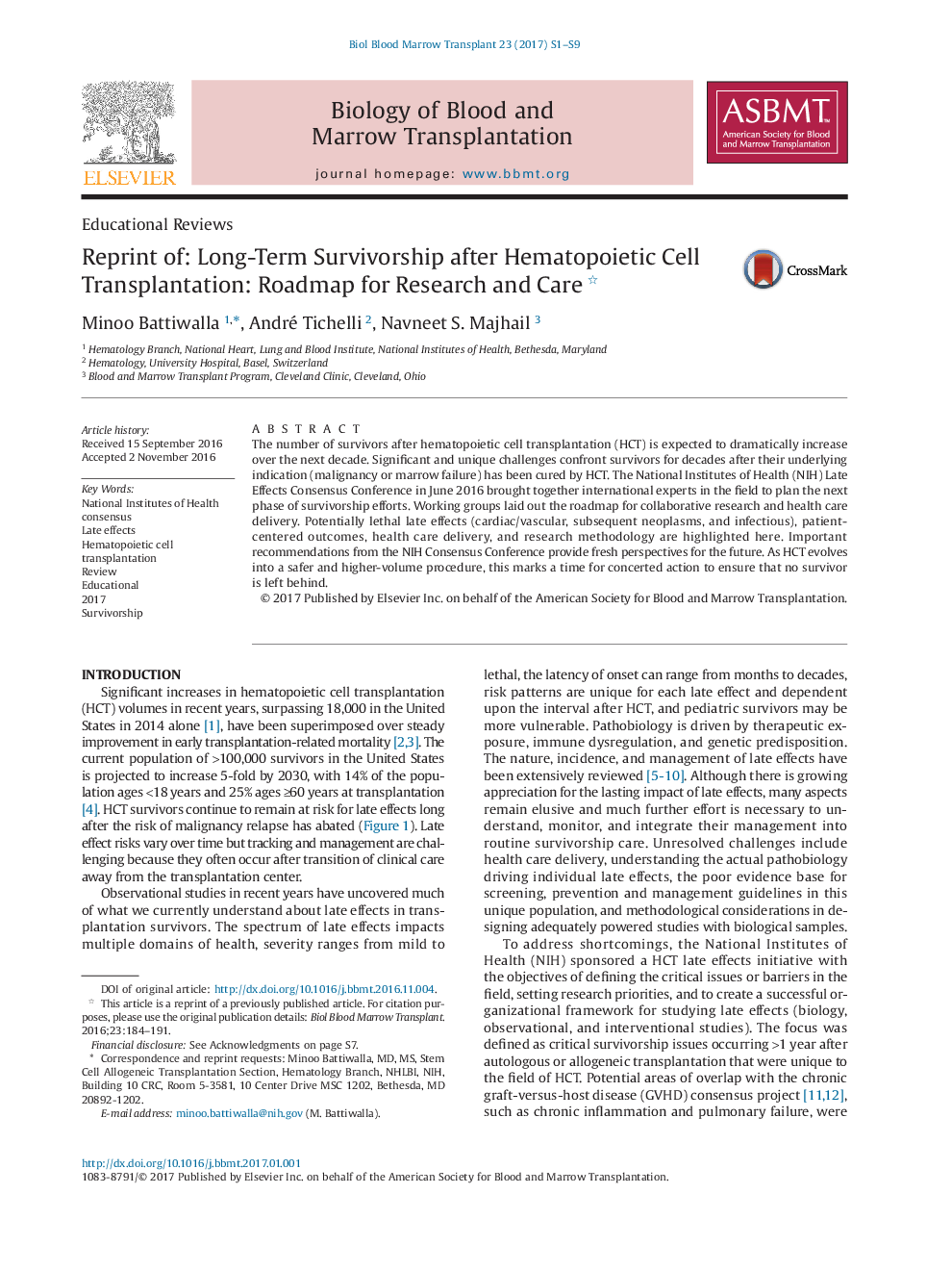| Article ID | Journal | Published Year | Pages | File Type |
|---|---|---|---|---|
| 5524438 | Biology of Blood and Marrow Transplantation | 2017 | 9 Pages |
â¢Growing numbers of early hematopoietic cell transplantation survivors mandate a reappraisal of late complicationsâ¢The priorities are to address lethal late effects, quality of life, and health care deliveryâ¢The National Institutes of Health late effects initiative has provided a roadmap for hematopoietic cell transplantation survivorship efforts
The number of survivors after hematopoietic cell transplantation (HCT) is expected to dramatically increase over the next decade. Significant and unique challenges confront survivors for decades after their underlying indication (malignancy or marrow failure) has been cured by HCT. The National Institutes of Health (NIH) Late Effects Consensus Conference in June 2016 brought together international experts in the field to plan the next phase of survivorship efforts. Working groups laid out the roadmap for collaborative research and health care delivery. Potentially lethal late effects (cardiac/vascular, subsequent neoplasms, and infectious), patient-centered outcomes, health care delivery, and research methodology are highlighted here. Important recommendations from the NIH Consensus Conference provide fresh perspectives for the future. As HCT evolves into a safer and higher-volume procedure, this marks a time for concerted action to ensure that no survivor is left behind.
